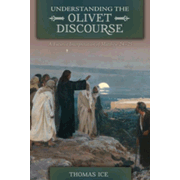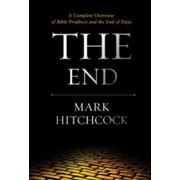
Updated: May 15, 2025
Have you ever wondered what it must have been like to sit at Jesus’ feet, hearing firsthand His roadmap for the End Times? Just imagine the hushed awe among His closest disciples as the Savior painted the future in vivid, urgent strokes.
This powerful moment is captured in what we call the Olivet Discourse, a prophetic sermon delivered from the Mount of Olives just days before His crucifixion.
As we journey through this teaching, my prayer is that it will stir a deeper longing in your heart for Christ’s return and a greater urgency to live faithfully until that glorious day.
What is the Olivet Discourse?
The Olivet Discourse is recorded most fully in Matthew 24–25, and in parallel, though shorter, accounts in Mark 13 and Luke 21.
Jesus gave this profound message to a small, intimate group — Peter, James, John, and Andrew — in response to their deeply personal questions about the destruction of the Temple and the end of the age (Matthew 24:1–3; Mark 13:3).
Imagine what it must have been like — to listen as the Son of God unveiled the blueprint for the end of history itself!
Christ’s Return: Two Distinct Phases

Before diving deeper, it’s important to clarify: there are two phases to what we often call Christ’s “Second Coming.”
First, He will return in the air to rapture the Church (1 Thessalonians 4:13–18; 1 Corinthians 15:51–52).
Later, at the close of the seven-year Tribulation, He will return to earth, standing on the Mount of Olives, to defeat the Antichrist and establish His Millennial Kingdom (Zechariah 14:4; Revelation 19:19).
In the Olivet Discourse, Jesus focuses on events surrounding His Second Coming to earth, not the Rapture.
Prior to this discourse, Jesus and His disciples had been at the Temple in Jerusalem. As they departed, Jesus prophesied, “not one stone shall be left here upon another” (Matthew 24:1–2).
Crossing the Kidron Valley to the Mount of Olives, the disciples, burdened with questions, sought a clearer understanding.
The End of the Age: One Question, Three Parts
When they reached the Mount of Olives, four disciples approached Jesus privately (Matthew 24:3).
They essentially asked one major question with three parts:
- When will the Temple be destroyed?
- What will be the sign of Your coming?
- What will signal the end of the age?
For these Jewish men, the destruction of the Temple, the arrival of the Messiah, and the end of the world were interconnected (Zechariah 14:1–11). Thus, the Olivet Discourse zeroes in on the Tribulation period immediately preceding Christ’s return.
While some scholars suggest that parts of Jesus’ prophecy were fulfilled with the Temple’s destruction in 70 AD, much of the discourse clearly speaks of future, end-time events.
The Olivet Discourse: A “Mini Apocalypse”
Often called the Mini Apocalypse, the Olivet Discourse provides a compact, powerful overview of End Times prophecy.
In just twenty-seven verses (Matthew 24:4–31), Jesus moves from the beginning of the Tribulation to His victorious Second Coming.
In Matthew 24:4–14, Jesus outlines eight key signs — likened to birth pains — that will escalate before His return:
- False Christs (v. 5)
- Wars and rumors of wars (vv. 6–7)
- Famines (v. 7)
- Earthquakes (v. 7)
- Persecution of believers (vv. 9–10)
- False prophets deceiving many (v. 11)
- Lawlessness and a cold love (v. 12)
- Worldwide preaching of the gospel (v. 14)
The birth pains metaphor suggests that these End Times signs will intensify in both frequency and severity as the culmination of the age draws near.
The Great Tribulation and the Antichrist’s Betrayal
Matthew 24:15 marks a critical turning point.
Jesus refers directly to Daniel’s prophecy (Daniel 9:27), highlighting the “abomination of desolation” — when the Antichrist desecrates the rebuilt Jewish Temple.
This marks the midpoint of the Tribulation, launching the final and most terrifying 3 ½ years (Matthew 24:21–22).
The horrors will be so overwhelming that, if not shortened, no life would survive.
During this period:
- False messiahs will abound (Matthew 24:23–26).
- Cosmic disturbances will signal the imminent return of Christ (Matthew 24:29–31).
- The faithful remnant of Israel will be gathered together to enter the Kingdom.
Jesus urges vigilance, using the fig tree parable (Mark 13:28–29) — just as leaves signal summer, so these events will signal His soon return.
The Generation That Will Not Pass Away
One of the most discussed verses in End Times theology is Matthew 24:34:
“Assuredly, I say to you, this generation will by no means pass away till all these things take place.”
Some claim Jesus referred to the generation alive during 70 AD. However, that does not fit — the catastrophic signs and cosmic events Jesus described were not fulfilled then.
Most likely, “this generation” refers to those living during the Tribulation, who will witness all these End Times events — from beginning to end.
In other words, once the Tribulation signs begin, they will unfold swiftly within a single generation.
Those who witness the “birth pains” will also see the glorious “birth” — the return of Christ.
The Futuristic View: Why Matthew 24 Awaits Fulfillment

A careful reading reveals strong reasons to interpret Matthew 24:4-31 as a future prophecy:
1️⃣ Jewish National Repentance is Required (Matthew 23:39):
Jesus said He would not return until Israel says, “Blessed is He who comes in the name of the Lord!”
This has not yet happened. According to Zechariah 12:10, national repentance will occur at the end of the Tribulation.
2️⃣ The Disciples’ Question Focused on the “End of the Age.”
Jesus and His disciples used the phrase “end of the age” (Matthew 13:39, 49) to refer to final judgment — not merely the fall of Jerusalem.
John MacArthur wisely summed it up:
“It seems more sensible and more consistent, therefore, to take a futuristic approach with respect to the Olivet Discourse — to interpret the entire discourse as a prophetic picture of events that will take place long after the destruction of Jerusalem in AD 70.”
Thus, the Olivet Discourse is an End Times blueprint still awaiting full realization.
Conclusion: Living with Urgency and Hope
As I reflect on the Olivet Discourse, I’m personally reminded that prophecy isn’t just about satisfying curiosity — it’s a call to action.
Jesus wasn’t giving His disciples a timeline for idle speculation. He was urging them — and us today — to stay faithful, watchful, and engaged in His work.
The parables of Matthew 24–25 encourage us to love Christ’s appearing, labor faithfully, and live expectantly.
We may not know the exact day or hour, but we know our Redeemer is coming.
So, friend, let’s not waste the opportunities He’s given us.
We may not be famous, talented, or influential by worldly standards, but we can be faithful — and faithfulness is what He rewards.
No matter where you are on your journey, remember:
Jesus is coming again. Let’s live like we believe it.
Affiliate Disclaimer
This post contains affiliate links. If you click on one of the links and make a purchase, I may receive a small commission at no extra cost to you. I only recommend products I truly believe in and think will be beneficial to my readers. Thank you for supporting Biblical Christianity!
Recommended Resources on Bible Prophecy
In connection with this post on the Olivet Discourse, here are two trusted resources I highly recommend for a deeper understanding of biblical prophecy and the end times. Both books are solidly grounded in Scripture and offer clarity on Jesus’ teachings about His return. May these resources strengthen your faith and stir your heart for the hope we have in Christ.

|
Understanding The Olivet Discourse: A Futurist Interpretation of Matthew 24–25By Thomas Ice This book offers a detailed, futurist interpretation of Matthew 24–25—the heart of Jesus’ prophetic teaching. Dr. Ice explores key events surrounding the seven-year tribulation and Christ’s second coming, providing a clear and compelling look at God’s prophetic timeline. |

|
The End: A Complete Overview of Bible Prophecy and the End of DaysBy Mark Hitchcock A comprehensive and accessible guide to end-times prophecy. Hitchcock presents multiple eschatological views with biblical clarity, helping readers navigate what Scripture says about the return of Christ, the tribulation, and God’s ultimate plan for His people. |

I really enjoyed reading your commentary!
It is always very important and refreshing to see that the word of GOD and JESUS’ teachings and instructions are not misinterpreted.
Thank You.
Your Christian Sister!
It’s essential to never misinterpret what the Word of God says. This is why it is important to keep studying the Bible and come up with the correct exegesis.
Thanks, Myra. God bless you more! ☺
This is a follow-up to an earlier post. I gave you the wrong email, inadvertently. The correct email is https://prophecyfacts.org. Or, you can use the one posted here.
I’m writing a book: WHAT’S NEXT? Prophecy Tells Us.
As a scientist, follower of Jesus, author, former professor at USC, and poet, I use fulfilled Bible prophecy to prove the biblical account of creation to be true, scientifically. That means the Big Bang is false, based on irrefutable, reproducible, facts, supported by odds of the findings exceeding chance at 1,000,000 billion to 1.
I’ve discovered that the last day of mankind’s 6,000 years of governance falls on April 11, 2032. That date is 2,000 years, to the day, from the Crucifixion on Passover, Nisan 14, 32 A.D. Of the years 30, 31, 32, and 33 A.D., year 32 A.D. is the only one that is 483 years (173,880 days) from the command by Artaxerxes’ 20th year as King in 445 B.C. to Palm Sunday, Nisan 10, 32 A.D. He began his reign in 465 B.C.
Furthermore, the command went out in the month of Nisan.
These findings are worthy of discussion with respected scholars, and I am open to that.
Thank you so much for taking the time to share your research with us. It’s truly an honor to have you here
And I would be thrilled to see you debate any scholar who believes contrary to yours.
I will be looking at your research as I wait for the release of your book.
Thanks again, Dr. Williamson.
God bless you more!
The God of the Bible inspired his selected prophets to predict future events. They had no control over the fulfillment of those events. That was God’s exclusive responsibility.
When 100 percent of the prophecies come true in the era or on the predicted date, and hundreds of prophecies have done that, it is compelling evidence of God’s existence.
I have discovered dates in the Bible that fall on Jewish holy feast days, established in 1446 B.C., long after creation. Their separation by irregular spans of time, yet falling on holy feast days with odds exceeding chance by 1,000,000 billion to 1, required a supernatural being with infinite knowledge, intelligence, and power. Impossible by the Big Bang.
Here is the equation using Excel =((1732849)-(4000*365.2423))+((6000*365.2423)).
Legend 1732849 is the Julian day for Jesus’ Crucifixion, Passover, Nisan 14, 32 A.D. The next term lands on Nisan 14, 3969 B.C.
The next term lands on Nisan 1, Feast of Trumpets, The Spiritual New Year, April 11, 2032. That date is the final day of mankind’s 6,000-year governance. Take note: the rapture, Daniel’s 70th week, and the second coming of Christ, all precede that date.
Time is short!
Hello Dr. Mike,
Thanks for sharing, I appreciate it very much.
Just to clarify, are you saying that Christ will return before April 11, 2032?